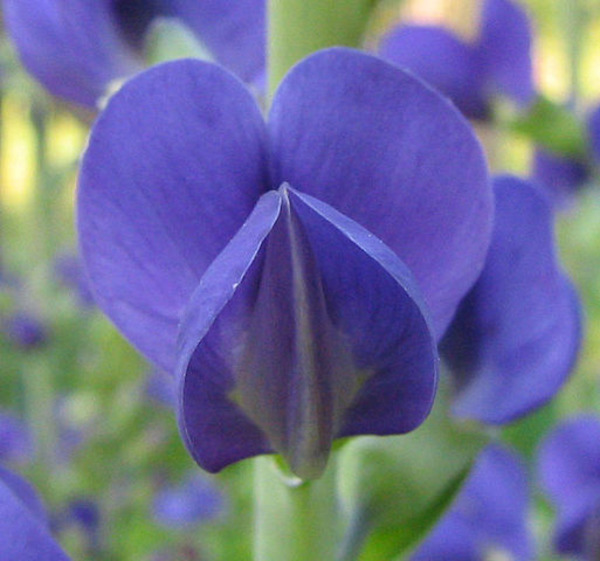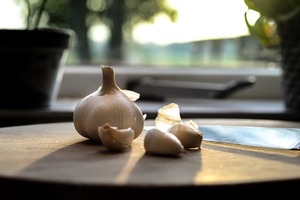Herbal Immunity Boosters is a type of herb that can only be used in the short-term when you’re in desperate need to stimulate your white blood cells. It is mostly advised that they are used in the developing stages of an illness or when you have been exposed to a contagious infection.
They might be a quick fix, but they will not fight infection for the entire duration of an illness. Therefore, they need to be administered regularly to keep their levels topped up in the body.
Let’s take a peek at the herbal immunostimulant world’s rock stars and what they can do for you.
Boneset (Eupatorium perfoliatum)
Boneset is a plant that belongs to the same botanical family as daisies and echinacea, despite its lack of popularity. It is mostly found in North America and has a long history of Native American use. It was once used to treat a wide range of illnesses, particularly those that resulted in fevers.
When Europeans arrived in North America, they discovered its amazing therapeutic properties and began using it to cure malaria.

The above-ground sections of the boneset plant are usually utilised in herbal medicine. Flowers and leaves, for example. It’s now commonly used to treat mild infections like the common cold. This works by increasing the activity of white blood cells. Some people, however, swear that it may be used to treat more serious infections like influenza.
boneset tea
If you’re sick with the flu or a cold and your temperature is rising, a soothing boneset tea will help you feel better soon.
Firstly, take 2 teaspoons of dried boneset or 1 spoonful of fresh boneset.
Soak in boiling water and cover for 15 minutes. Once the water is at a temperature you can tolerate, remove the lid, strain the mixture and sweeten to taste. You can use sugar if you like, but other options such as agave nectar, maple syrup and stevia also make great alternatives.
To combat your cold as effectively as possible, drink a little cup every hour until you see a reduction in your symptoms.
Boneset tea can also help to stimulate digestion, especially when consumed after a meal. Simply sip a small cup of tea or take 2 teaspoons after each meal.
Echinacea (Echinacea purpurea)
Echinacea, also called purple coneflower, is one of the most popular herbs worldwide.
Native Americans have used it for centuries to treat various ailments.
Today, it’s best known as an over-the-counter herbal remedy for the common cold or flu. However, it’s also used to treat pain, inflammation, migraines and other health issues.

How to take echinacea
The ways in which you consume echinacea are seemingly endless, but a popular way is to drink it in tea form. People who have drunk it on its own say it tastes tingling and has the same spicy sensation as cinnamon. However, don’t be alarmed by the tingling sensation. In fact, the more tingly echinacea is, the more powerful it is.
It can be blended with other components, such as peppermint, to improve its flavour. Echinacea, cherry, and cinnamon are a popular combo right now.
If you want to produce your own tea mix, you can utilise the plant’s purple petals, as well as the roots and leaves. For convenience, you can buy ready-made tea mixes, sachets, and bags.
Many health food stores also sell pre-prepared loose leaf echinacea tea, which combines the ease of ready-made tea with the power and freshness of picking the plant yourself. It’s also really simple to prepare.
echinacea tea
Simply bring some water to the boil, then let it cool slightly so it’s just below boiling point.
Pour the water over the loose tea and let it soak for around 15-20 minutes.
Then all that’s left to do is strain and serve.
If you don’t like the flavour of tea or want a faster way to get your immune-boosting dose, pills may be a good option for you. These can be purchased in a variety of health food stores and are fairly priced.
If you’d rather produce your own medicinal cure, consider producing your own echinacea tincture. It’s not as complicated as it seems, and it can provide you a highly powerful and potent cocktail that can help you enhance your immune system.
Wild Indigo (Baptisia australis)
This magical-sounding herb has been utilised as a treatment for a variety of diseases throughout history. It didn’t start off that way, though. It was first used as a blue dye in Europe. It wasn’t until later that the therapeutic powers were found. Only then did it start to be used to treat a whole host of infections, especially those affecting the mouth and throat. Ulcers and swollen lymph nodes were also treated with it.
Currently, it can be found growing freely in the Midwestern states of the US, and should you wish to use it, make sure to only use the root.
it has been discovered that wild indigo contains polysaccharides along with proteins. These two discoveries have been proven in test tube studies to strengthen the immune system. And it is especially good at fighting influenza.
Although wild indigo performs a fantastic job of boosting our immune systems, it is commonly considered that when paired with other herbs, it can be much more effective. Popular options to add to wild indigo include echinacea and goldenseal which both work to boost its already powerful healing power.

wild indigo tea
A decoction of wild indigo can also be consumed. This is even simpler to create than the tincture and only takes around 15 minutes. Perfect for when you’re sick right away and don’t have time to wait weeks for a tincture.
To make your decoction, boil the root of the wild indigo plant in water for between 10 and 15 minutes.
Wait for the mixture to cool slightly, then take half a teaspoon of the mixture when you need it.
What’s fantastic about wild indigo tinctures and decoctions is that they can be used not only to treat symptoms of illnesses like colds and flus, but also to prevent them.
Garlic (Allium sativum)
It’s not just for battling vampires and putting in mayonnaise. It’s also great for boosting our immune system. We’re all familiar with it as a pleasant herb that may be found in some of our favourite dishes. It’s also been in use for about 5000 years! Traditional Chinese medicine, on the other hand, has used it for almost as long.
Many knowledgeable thinkers have openly acknowledged the benefits of garlic over the centuries. Many of these experts praised garlic’s usage in the treatment of parasites, digestive stress, and respiratory disorders. However, it wasn’t until 1858 that the great French biologist Louis Pasteur investigated the garlic bulb’s precise antibacterial characteristics.
some notable studies include the exploration of garlic’s ability to lower blood pressure for the treatment of hypertension. It was concluded that participants who were given between 600 and 900 mg of garlic per day for 4 weeks had noticed a moderate decrease in blood pressure.
Another study found that taking 900mg of garlic per day reduced the rate of artery hardening. This is all while decreasing cholesterol levels. Furthermore, garlic was proven to lower the number of colds and the length of time they persisted when taken at a modest dose throughout the winter months. This is because studies have shown that garlic kills infectious microorganisms directly, protecting the body from sickness.
Garlic, on the other hand, has been shown to help with skin conditions like athlete’s foot. This is due to the presence of a molecule called ajoene, which is a potent anti-fungal agent. Not only that, but it can also help people and their pets get rid of parasites. Getting rid of worms such as hookworm, pinworm, and roundworm.

If you’re bold enough to eat raw garlic, a daily dose of 2-3 bulbs is ideal for battling illness and boosting your immune system. It’s worth noting, though, that the best results come from eating it on an empty stomach.
But be cautious. If you do this on a frequent basis, your stomach flora may become unbalanced. As a result, you may want to include probiotic-rich foods in your diet.
If popping garlic bulbs on an empty stomach doesn’t appeal to you, you may conceal the harsh taste while still reaping the benefits of the raw bulb by incorporating raw garlic into food.
Simple Garlic Recipes- Garlic Pesto
Ingredients:
Wild garlic (as much as you like.) Make sure to keep the sprouts.
A hard cheese such as a parmesan would be perfect.
Nuts. Both pine and hazelnuts work well.
Olive oil.
A teaspoon of lemon juice.
Salt and pepper to taste.
Preparation: Gather your wild garlic (including bulbs and leaves) and place them in a food processor. After that, add about 50g of hard cheese and an equal number of nuts to the mixture. Add as much lemon juice and olive oil as you desire.
More liquid will make the mixture runnier, while less liquid will make it drier and more granular. Simply season with salt and pepper and whiz for around 60 seconds.
Simple Garlic Recipes- Garlic, Spinach and Basil Pesto
If the strong flavour of wild garlic is too much for you, combine it with other herbs and spices. This recipe is exactly as simple as the last one, although it does call for a few more ingredients.
Ingredients:
3 bulbs of raw, crushed garlic.
100g fresh basil.
2 tablespoons of parmesan cheese.
Chilli powder to taste.
50g of nuts (pine, hazel or Brazil taste great with basil).
Olive oil.
Preparation: Add the items to your blender and blend for 60 seconds, just like before. Making your own pesto is fantastic since there are no defined amounts of ingredients, so you can use as little or as much as you want. Add a handful of spinach and a pinch of basil to taste.
There are only a few leaves. And, of course, a hot kick from the chilli goes great with the garlic. It’s a tangy, hot combination that goes great with potatoes. Who’d have guessed that a potato salad could be used as medicine?
Source: Text Book of Herbal Medicine, Google

